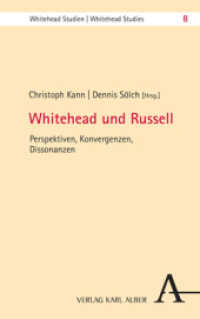Full Description
This book presents an innovative approach to the synthesis and mechanical characterization of hydroxyapatite (HA)-based nanocomposites for biotechnological applications. By integrating advanced X-ray diffraction (XRD) techniques with ultrasonic pulse-echo testing, it provides a high-precision method for determining nanocrystal size, stress-strain behavior, and elastic modulus. The book investigates the effects of doping HA with silver and copper iodide, enhancing structural integrity and bioactivity, and offering new perspectives for optimizing HA-based materials in biomedical applications.
The book explores the investigation of nanocrystal size of natural HA using X-ray diffraction, as well as the evaluation of an innovative technique for measuring the modulus of elasticity related to the atomic density of planes in unit cell and super cells of crystal lattices. It also examines the relationship between Young's modulus and planar density in unit cells, super cells (2x2x2), and symmetry cells of cubic crystal lattices. Furthermore, the book explores the effect of calcination temperature on the mechanical and photophysical properties of CuI-doped HA, providing a deeper understanding of material stability under varying conditions.
By linking fundamental materials science with applied biomedical engineering, this book establishes a robust framework for the development of next-generation biomaterials. The combination of innovative synthesis techniques and advanced mechanical characterization offers practical insights to improve the longevity and performance of HA-based implants and scaffolds.
This book will be a valuable resource for researchers, engineers, and professionals in materials science, nanotechnology, and biomedical engineering. It will particularly benefit those working with bioactive materials, implant development, and mechanical characterization, as it provides cutting-edge methods for optimizing HA composites for clinical use.
Contents
Introduction.- Assessing Techniques for Determining Nano Crystal Size of Natural Hydroxy-apatite via X-Ray Diffraction.- Determination of Elasticity Modulus in Relation to Atomic Density of Planar Structures in Crystal Lattice Unit Cells.- Correlation Between Young's Modulus and Planar Density of Unit Cell, Super Cells (2 x 2 x 2), Symmetry Cells of Perovskite (CaTiO3) Lattice.- X-ray Diffraction Analysis and the Williamson-Hall Method in the USDM Model to Estimate More Precise Values of Stress-Strain in the Unit Cell and Supercells (2 x 2 x 2) of Hydroxyapatite, as Validated by Ultrasonic Pulse-Echo Testing.- Novel Methodology for the Fabrication of In-vitro Bioactive Scaffolds Com-prised of Silver-Doped Hydroxyapatite Combined with Polyvinyltrimethox-ysilane.- Influence of Calcination Temperature on the Photophysical and Mechanical Characteristics of Hydroxyapatite Doped with 5 mol% Copper Iodide.








